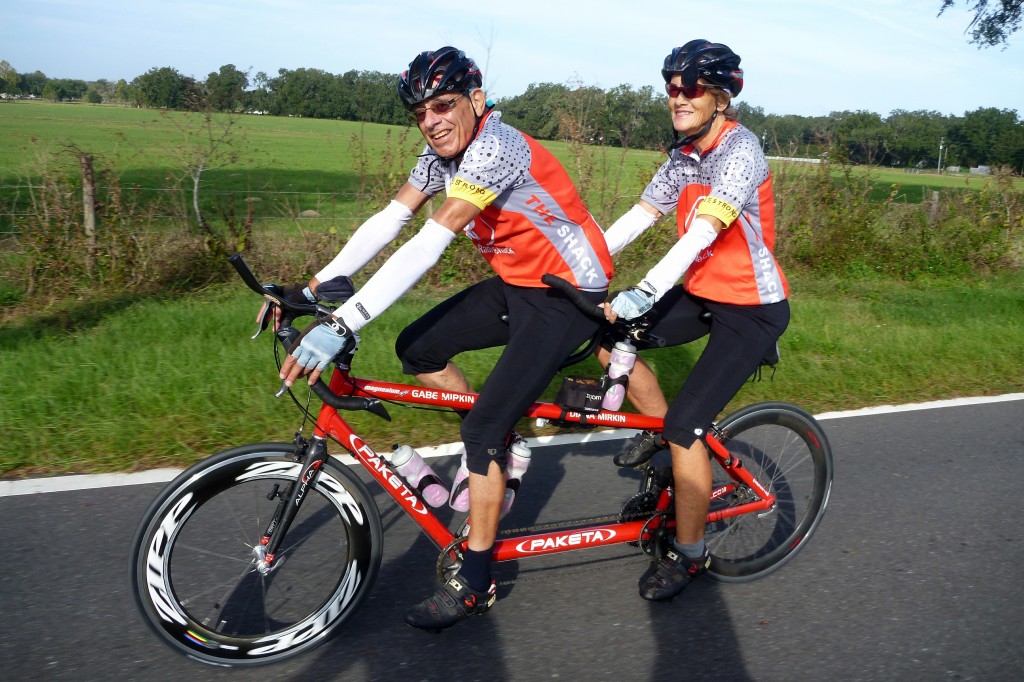
If you ride a bicycle, be proud. Humans riding on bicycles are more energy-efficient than any other animal and any other form of transportation. Vance Tucker of Duke University compared bicyclists to humans and animals running, birds flying and fish swimming, as well as to people in motor-powered cars, boats, trains and planes (J. Exp. Bio, 1973;68(9):689-709). The less energy per weight you use to travel over a distance, the more energy-efficient you are. Vance found that the most efficient creature without mechanical help is a condor. With mechanical help, the cyclist comes out on top. Here is a partial list, ranked from most to least energy-efficient:
human on a bicycle
condor
salmon
horse
human in a jet plane
human walking
human running
human in an automobile
cow
sheep
dog
hummingbird
rabbit
bee
mouse
Mice, bees and hummingbirds use the most energy per weight and therefore are very inefficient and tire the earliest. This concept explains why pre-historic human hunters could catch faster-running animals. The human would tire later, so it didn’t matter how fast the animal could run; if the human ran long enough he would eventually catch the exhausted animal.
A person on a bicycle is more energy-efficient than one using an automobile, motorcycle, train or plane, even though he is much slower. If you compare the amount of calories burned in bicycling to other forms of locomotion, you will find that 100 calories supplies an average cyclist for three miles, a walker for one mile and a car for only 280 feet. A walking human uses 0.75 calorie of energy per gram of body weight for each kilometer traveled, while a cyclist uses only a fifth as much, 0.15 calorie per gram per kilometer. The WorldWatch Institute reports that when you ride a bicycle you use only 35 calories per mile, while walking requires 100 calories per mile, buses and trains use about 900 calories per mile per person, and a car uses 1860 calories per mile (Ergonomics, 2008 Oct;51(10):1565-75).
Slow Riders Use Less Energy Than Fast Riders
Cycling is so energy-efficient that a good rider can go just about any distance. In 2014, Christopher Strasser won the Race Across America by cycling 3,098 miles in seven days, 15 hours and 56 minutes. He averaged 16.42 miles per hour. The record for a woman was set in 1995 at an average speed of 13.23 MPH. Interestingly, slow riders use less energy per mile than fast riders. During a one-hour ride, a person riding a touring bike for nine miles burns 135 calories with an average power of 50 watts. In an hour an experienced bicycle racer can go 30 miles but will burn 2150 calories and produce approximately 500 watts or 0.67 horsepower. You burn more calories per mile because the faster you ride, the greater the wind and air resistance. Resistance varies with the square of your speed. A recumbent bicycle is more energy-efficient because being lower to the ground reduces the size of the bike and body that is being blocked by wind and air resistance (Proc Biol Sci, 2001 Jul 7;268(1474):1351-60).
More Cars Than Bikes in North America
The world’s 6.1 billion people own 1.2 billion bicycles and only 600 million motorized passenger vehicles. That’s one bike per five people and one automobile per 10 people. However, the highly-developed countries are dominated by automobiles. The United States has:
• Twice as many automobiles as bicycles
• More than 90 percent of transportation trips done in automobiles
• Less than one percent of trips done by bike
Benefits of Riding a Bicycle
More people should ride bicycles because:
• Bicycles require the least energy to go places. Cars use 30 percent of world’s petroleum.
• Bicycles are far more energy efficient than running or walking.
• Bicycles produce less air pollution than motor-driven transportation.
• Bicycles are manufactured with far less material and labor than engine-driven forms of transportation.
• Bicycles help to prevent disease and prolong life by giving you the health benefits of exercise.
Dr. Gabe Mirkin is a Villager. Learn more at www.drmirkin.com

